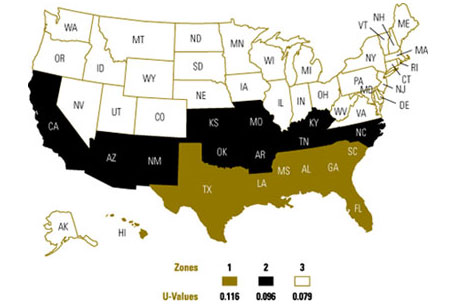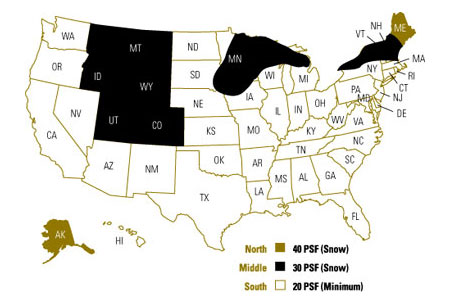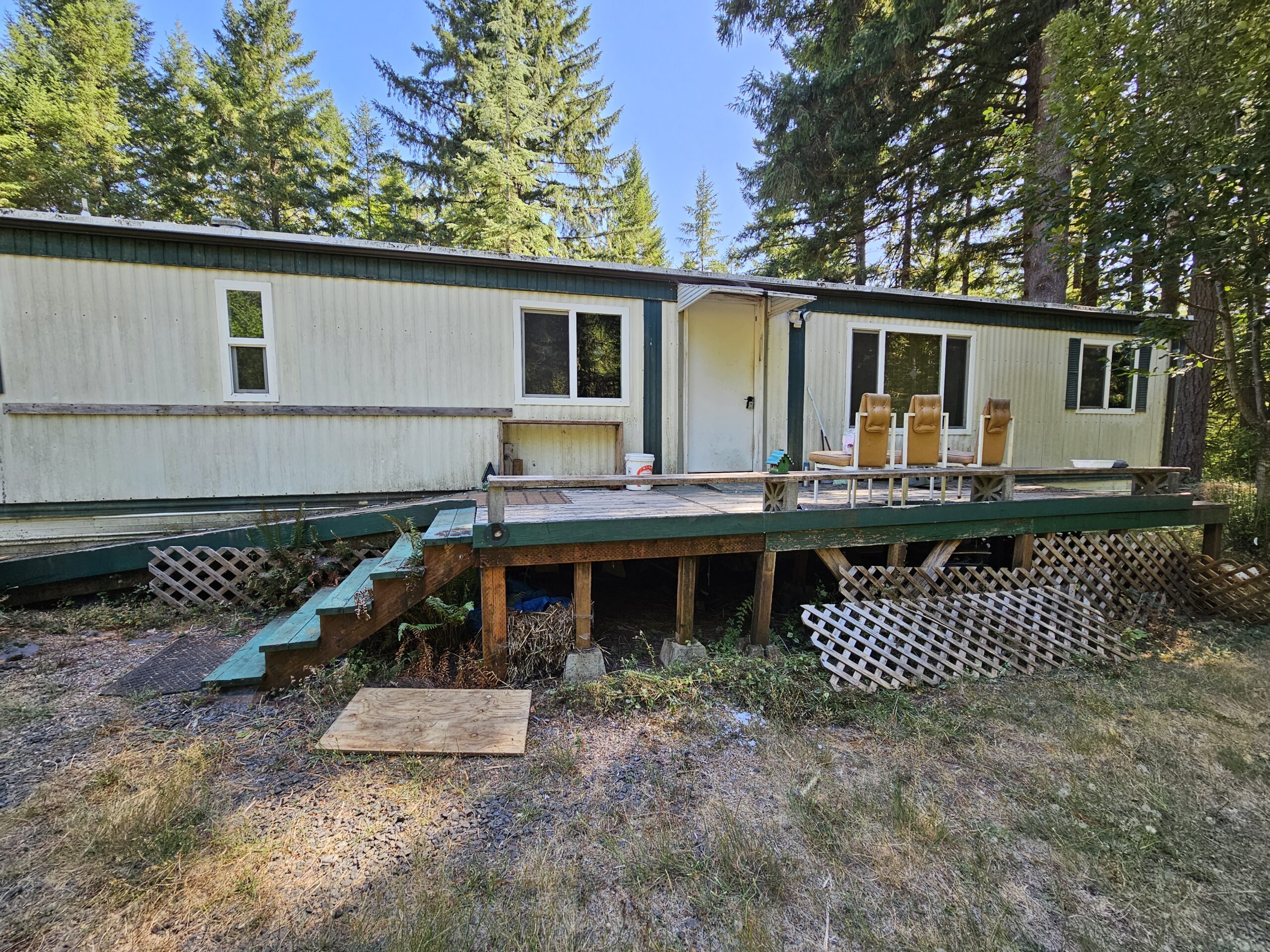Determining how long mobile homes will last depends on a couple of factors - like the most things you own—from appliances to property. How well you maintain your mobile home is a significant factor in determining its lifespan.
On average, the life expectancy of mobile homes ranges from 20 to 55 years. This is the case for a home whose owner complies with the standards expected of mobile homeowners by the Department of Housing and Urban Development (HUD).
However, despite how well you take care of your mobile home, it doesn’t just follow a simple theory. HUD’s theory is a 35-year range within which anything can happen. One of such things is climate.
The climate of an area influences everything, but the rate at which something declines under the effects of climate depends on whether the climate is dry or humid. Materials deteriorate quicker under a wet and humid climate than a dry one.
Also, mobile homes, due to their unique foundations, are more vulnerable to strong winds when not installed properly. In fact, a recent study found that the likelihood of a tornado-related death is 15 to 20 times higher in mobile homes than in traditional housing.
That said, how long should you expect your mobile home to last? Let’s go back to the first factor: how well they are built.
How are Mobile Homes Built?
As we established earlier, mobile homes generally last 20 to 55 years. However, depending on how well you care for them and a few additional factors, your mobile home can either fall within that range or outside it (whether it’s less than 20 years old or more than 55). The HUD’s standards help.
They’re quite strict, but they make sure the home is habitable for as long as reasonably possible.
HUD’s Standards for Mobile Homes
For your health, safety, and comfort
According to HUD,
- The minimum size of a mobile home (called a “manufactured home” after 15th June 1976) must be 400 square feet
- The home must have a ceiling at least 7 feet above the floor in bathrooms and habitable rooms. For the storage area(s) and hallway(s), a minimum floor-to-ceiling clearance of 6-and-a-half feet is required.
- Floor area of at least 50 square feet for a single-person bedroom. A two-person room must have a minimum of 70 square feet of area.
- Bathrooms and kitchens must have a mechanical ventilation system
- Every room must have a window that leads outside
- Units must have at least two outside spaces—12 feet for a single-wide and 20 feet for a double-wide
These guidelines guarantee the comfort of residents who adhere to them. But HUD doesn’t stop at that. They also provide regulations to preserve the lifespan of your mobile home.
For the preservation of mobile homes
This set of guidelines is grouped by location. HUD has come up with a system to facilitate the design of mobile homes. Countries in the US have been grouped into three categories:
- Wind zones
- Thermal zones; and
- Roof load zones
Wind zones
These zones are locations that experience high winds. Homes developed for this region are built to be able to withstand strong winds. These zones cover the coastal region.
Thermal zones
Thermal zones, as the name implies, are zones categorized based on temperature. HUD code divides the United States into three thermal zones, and each newly mobile home is built in conformity to one. Each zone has a U value (proportional to the average temperature) assigned to it; a measure of how much heat is transmitted or leaked through a house.

Image source: Manufactured Housing Institute
Homes built for the white part are different from those built for the brown. Since they’re built for colder areas, homes meant for the white part come with a few more things built in, like foam for insulation against the cold. The brown part, on the other hand, will contain homes whose design is geared towards repelling as much heat as possible.
Roof load zones
Roof load is based on how much snowfall an area experiences per year. HUD uses pounds of snow per square foot (PSF) as a measure of how much snow load the roof can hold. From the map below, it’s easy to see the results of their research.

Image source: Manufactured Housing Institute
Therefore, if a manufacturer intends to sell a home to either of those states, the roof has to be sturdy enough to withstand the weight of the snow for years and decades.
What Materials are Used to Construct a Manufactured Home?
The materials used to make a manufactured home are mostly the same as those used for site-built homes. Most common building materials are wood (most preferable), metal, glass, and vinyl.
However, manufactured homes are lighter than their more permanent cousins. For example, bricks are mostly used in warmer climates.
In addition, manufactured homes can be smaller than site-built ones. So, it’s how these materials are used in mobile home construction that makes a difference in weight and durability.
How are Manufactured Homes Constructed?
Site-built homes are built on permanent foundations that can fall prey to weathering and chronic flooding. HUD directs that manufactured homes, on the other hand, be built on a heavy steel frame that can be supported by a temporary foundation (blocks) or more sturdily grounded concrete piers.
The floor of the home has to be supported by joists, and the sub-floor is usually made of oriented strand board (OSB) or ¾-inch plywood. The floor finish is left up to the location guidelines (tiles for the south, parquet for the north).
Since all this is made by the manufacturers, it withstands the stress of transport.
What Affects the Lifespan of Mobile Homes?
Some factors that affect how long mobile homes lasts are:
1. Initial Installation
Before installation, the site has to be properly prepared. These preparations involve creating a sloping berm to allow water to flow away from the home. Your land might not have a berm, but that's not a problem. The berm is simply to further reduce the chances of water damage from the ground. As long as your area doesn’t experience severe flooding, you’ll be alright.
2. Foundation Problems
These problems include:
- Cracked walls
- Doors and windows out of alignment
- Sudden floor sloping
- Separation of a wall from ceiling
These problems lead to the integrity of your home deteriorating quickly.
3. Damage
Different kinds of damage could occur in mobile homes. These include:
- Fire damage
This is quite obvious, but that’s not why fire damage is to be feared. Apart from the loss of property, fire damage paves the way for water damage to wreak its own brand of havoc.
- Water damage
Water damage is the enemy that shouldn’t be ignored if you live in a mobile home. This is because water rots materials, especially wood. As wood is usually used for the floor, walls, and ceiling beams, water damage is best caught and repaired early.
Banyan has seen homes that have had mold in them and the mold is so severe that the home can become condemned by the county or the insurance agency. This then salvages the home and its title, presenting hurdles when it comes to removing the home.
Wetness also leads to mold. Mold has never signified beauty, and some species are toxic, like black mold. It’s good practice to remove it wherever you see it. It’s a better practice to prevent it from growing at all.
You can do this by using a home dehumidifier for the indoors, and a mold and mildew protectant for the outdoors.
How to Extend the Lifespan of Your Mobile Home
1. Choose the location of your mobile home wisely
It’s advisable to choose a site with good and firm soil. If the area is prone to floods, either take appropriate measures or avoid it altogether.
It is good to note that Banyan has seen many homes from Arizona, Utah, and Nevada that are in great shape even though they are over 50 years old. The climate out there sure treats homes better than in Florida or Los Angeles. Getting a new home in a similar area would more than likely ensure a long life for the home with the proper upkeep.
However, by location, we don’t just mean the land. Location also involves the state you want to reside in. When choosing a location, take into consideration the climate of the area.
2. Schedule regular mobile home inspections by professionals
When your home has foundation problems like home tilt or shift, or roof problems, they don’t occur overnight. They develop gradually. So gradually, you need an outside perspective to realize it. Ensure you have regular inspections to counteract it, especially after floods, earthquakes, hail, and other disasters.
3. Take care of any problems as they develop
The single most important factor is regular and quick maintenance.
This helps in preserving the mobile home's structure. Banyan has witnessed numerous homes with branches through the roof or window leaks. Addressing these issues promptly preserved the structure, preventing water intrusion and enabling it to be relocated and even reused.
Don’t give problems time to devolve into severe issues.
4. Upgrade your utility appliances
New is beautiful. A new look is almost as beautiful. Upgrade your plumbing, lighting, flooring, etc, to keep your home modern and beautiful.
5. Regular paint jobs are useful
Don’t underrate the effect a great paint job has on the beauty of your home. Ensuring your home has a clean look goes a long way to improve its beauty.
Conclusion
With the unique build type of manufactured homes, it’s easy to take them apart, repair, and put them back together. That’s great for critical maintenance and extending their healthy years.
The 20 to 55 years' lifespan of manufactured homes is an average for most states, however, these require very strict and regular maintenance.
These measures should counter what you or the manufacturer foresee the manufactured home will experience over the years.
The effects of proper maintenance, sturdy, quality materials, preventive measures, and a great site on the lifespan of your mobile home are immense. There are mobiles everywhere that, at 50 plus years, still look great.
However impressive the strength of a well-maintained mobile home is, there are people who don’t want theirs anymore. It’s in these cases that an accredited 501(c)(3) nonprofit like Banyan steps in to help such people donate that mobile home. If you want to donate a mobile home, we’ll help you move it off your land for free. Call us or contact us today and we’ll help with the entire process.


